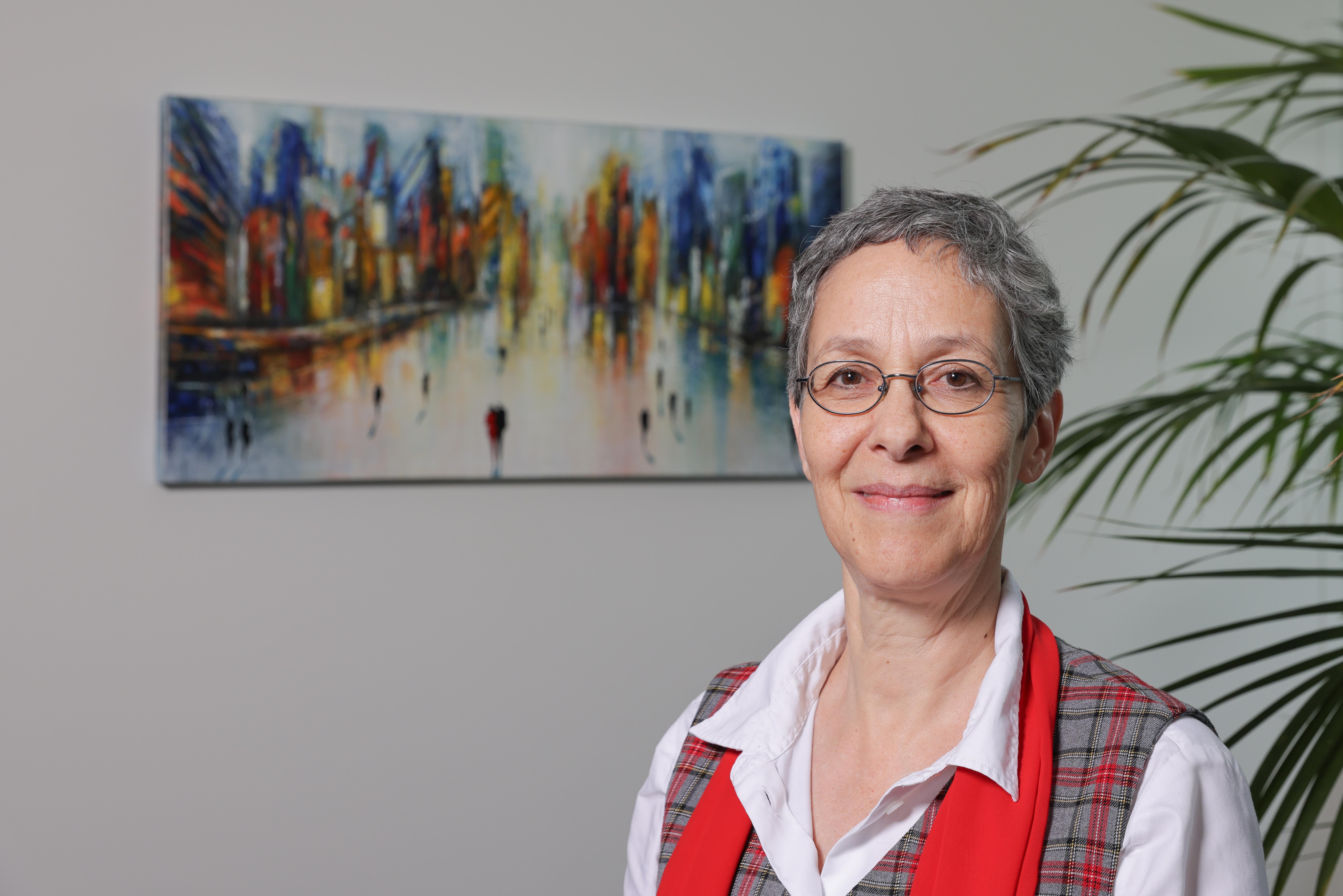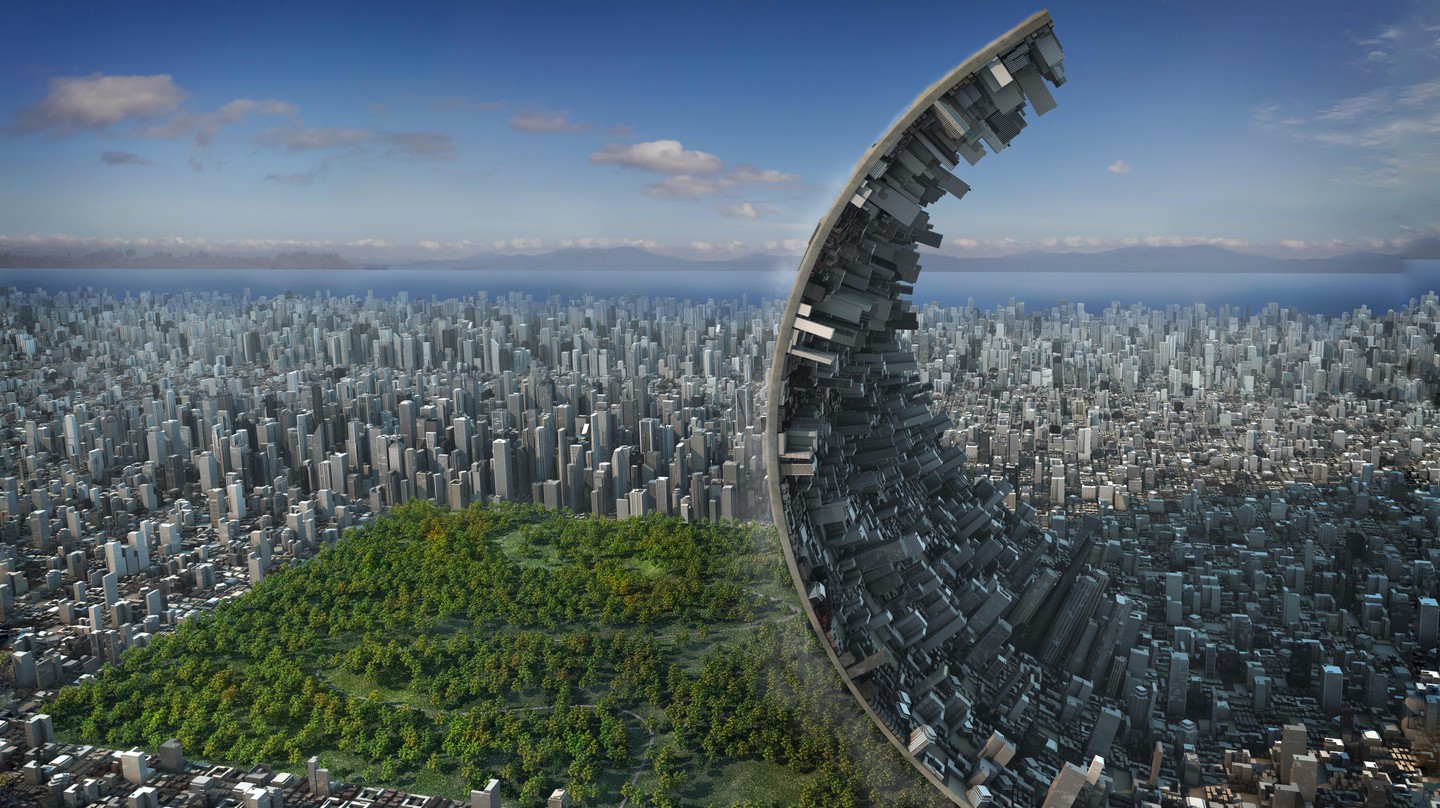Today, half of the world’s population lives in urban areas. This is giving rise to major challenges in terms of securing a sustainable future – a topic that will be explored during the World Cities Day on 31 October. Here is an overview of EPFL research carried out in this field.
For most of us, 31 October is Halloween. And yet, for almost 10 years now, it’s also been World Cities Day. What do the two have in common? Perhaps a certain penchant for excess, disproportion and even monstrosity? After all, urban centers generate up to 75% of global CO2 emissions. How should we view these complex, growing entities as we look to the future? How can we make them less gluttonous for energy and consumer goods of all kinds – or in short, make them more sustainable, pleasant places to live?
At ENAC, many researchers are working on urban issues. In a new video, “Une ville où tu respires” (A City Where You Can Breathe), EPFL professors and students in architecture, civil engineering and environmental engineering describe their research on traffic management systems, the greening of cities, urban planning on a neighborhood scale, and the impact of pollution on health and transportation. These studies were carried out under Claudia R.Binder’s watchful eye as the ENAC dean, a position she’s held for the past four years and will be leaving at the end of this year.

- What are the greatest challenges facing cities today?
“Cities cover about 2% to 3% of the Earth’s land surface. It’s not much. But they host more than 50% of the world’s population, produce 80% of its GDP, consume 75% of its resources and are responsible for 75% of its CO2 emissions. Thus, they’re the places with the highest environmental impact, but they also harbor the greatest opportunities. Over the years, wealth, civil rights, technological innovation and access to services like water and healthcare have improved with urban expansion. However, the downside is also visible: increasing inequality, overconsumption and environmental degradation. So, the biggest challenge cities face today is how to balance the positive and negative. That is, how can cities successfully transition to greater sustainability? This question has become even more pertinent today as exogenous factors such as climate change and growing urbanization make it increasingly difficult to provide city residents with sustainable living conditions that encompass housing, transportation, education, health, food and possibilities for personal growth.
- How can we act specifically on the climate and environmental challenges?
Adapting to climate change will require taking action to adjust to the current and future impacts. This includes adopting new technology – such as solar panels for rooftops and facades, and electric vehicles – renovating buildings, making behavioral changes to reduce consumption and redesigning cities. Regarding the latter, city planners could well prepare urban areas for climate change by using what’s called blue-green infrastructure, which is basically a strategically planned network of natural and semi-natural areas with different features at different scales. This would entail increasing the number of trees, parks and water bodies – the sponge city concept – and encouraging the greening of houses. One good example of such greening is the Bosco Verticale in Milan. City planners could also develop spaces dedicated to urban agriculture. These measures would mitigate heat islands and bring other positive effects, like increasing biodiversity, improving residents’ health and feeding at least a small portion of the urban population. By designing cities in this way, we can make sure they’re well-prepared to tackle climate change and offer essential services to their residents.
- How to implement such a city, considering the complexity and interests at stake?
In my view, cities should be designed jointly through dialogue among scientists, policymakers, engineers and economists, considering society’s values and

priorities. In our role as researchers, we provide essential data and technology like modeling programs and AI-driven systems. This technology can help policymakers craft a vision by letting them simulate the potential outcomes of their proposed measures. Such a collaborative, interdisciplinary approach would empower decision-makers and give them a deeper understanding of the myriad possible development scenarios for a city, including their inherent pros and cons.
And involving citizens is also important. One way to do this is to have them choose among different scenarios, identifying which they consider the most desirable to live in. We tested it at the Human-Environment Relations in Urban Systems Lab (HERUS), for example, as part of a citizen science project we carried out during the pandemic. With the support of colleagues in computer science and at EPFL’s College of Humanities, they developed an app and asked citizens to tell them what they think tomorrow’s cities should look like. The most frequent responses related to greening, sustainability, empathy and solidarity. Including citizens and their values in the process is very exciting for policymakers and researchers because it lets us figure out whether what we consider relevant is – or is not – consistent with what they consider relevant.
- Why is digital technology important in urban research going forward?
Digital technology is opening the door to new research avenues. For example, it lets us simulate potential pathways and tipping dynamics towards more sustainable states. These results could support policymakers in their decision-making and enable them to explore unknown avenues. This can be really powerful, and it’s underexploited so far, especially at the scale of a city due to the high complexity of urban areas. In the longer term, we could see digital platforms emerge, allowing scientists, engineers and policymakers to exchange data, build futures together and explore new research areas. At EPFL, we have two initiatives along these lines – Urban Twin and Blue City – which aim at engaging society and contributing to policymaking, for instance to reach the goals of Switzerland’s 2050 Energy Strategy.
- As the dean of ENAC, what do you feel has been your biggest contribution to urban issues?
One notable accomplishment at ENAC has been our dedication to fostering interdisciplinary research within our core sustainability-focused fields: climate change, digitalization and urbanization. This approach has catalyzed the exploration of numerous research avenues. We’ve studied the effects of trees on outdoor air quality in Geneva Canton, the potential of urban soils as carbon sinks, innovative urban waterway designs, and more. The emergence of these novel, inventive ideas has left me truly inspired.
A second area where we’ve made progress is in setting up FUSTIC, an EPFL association bringing together more than 130 people from science, engineering, industry and the public sector to promote more sustainable infrastructure in cities and territories. We’ve also strengthened our ties with local governments, in particular Geneva Canton. This has led to talks given regularly by ENAC researchers to cantonal officials. In addition, with the support of Geneva and Vaud Cantons, we created the Panel Lémanique d’analyse de la durabilité des pratiques, which aims at measuring attitudes and behaviors towards the environment and identifying trade-offs for climate action.
It’s very exciting to rub shoulders with the next generation of researchers
- What were your biggest surprises?
Taking a more critical, and more general viewpoint, I feel that research moves slowly and tends to achieve incremental gains rather than big leaps. One of the reasons, I believe, is that we tend to focus on narrow disciplinary research, making small advances to show we excel in a specific field. But by doing so, we tend to lose sight of the big picture. To address today’s issues, we need both, specialists and people who can connect and build bridges between different types of expertise. Typically, some of the biggest innovations have emerged at the edge of a discipline, not at its core. Our academic system strongly fosters disciplinary excellence, which is great, but it sometimes misses out on going to the edge of fields.
As a dean, it’s been gratifying to be able to hire excellent new faculty members, and very exciting to rub shoulders with the next generation of researchers. They’re highly motivated to solve the problems of our time, are value-driven and think about the broader issues. In particular, architects have to balance the needs of society with the principles of design and science, and draw from the past to create the future. I’m convinced it’s a great opportunity for us – for more technology, data and model-driven researchers – to listen to our colleagues who reflect on how society is developing. They put a mirror in front of us and say, “stop and think a minute – are we asking the right questions?”
- Do scientists think more now about the long-term consequences of their discoveries?
Some people do, reflect on the long-term impact of their research. I consider it important to teach students to have the bigger, system-wide picture in the back of their minds and put the research they perform in context. But it’s true that it’s often hard to imagine what the spin-offs will be of scientific discoveries, which often lie where we least expect them!”
(CC Int’l 4.0)


Comments